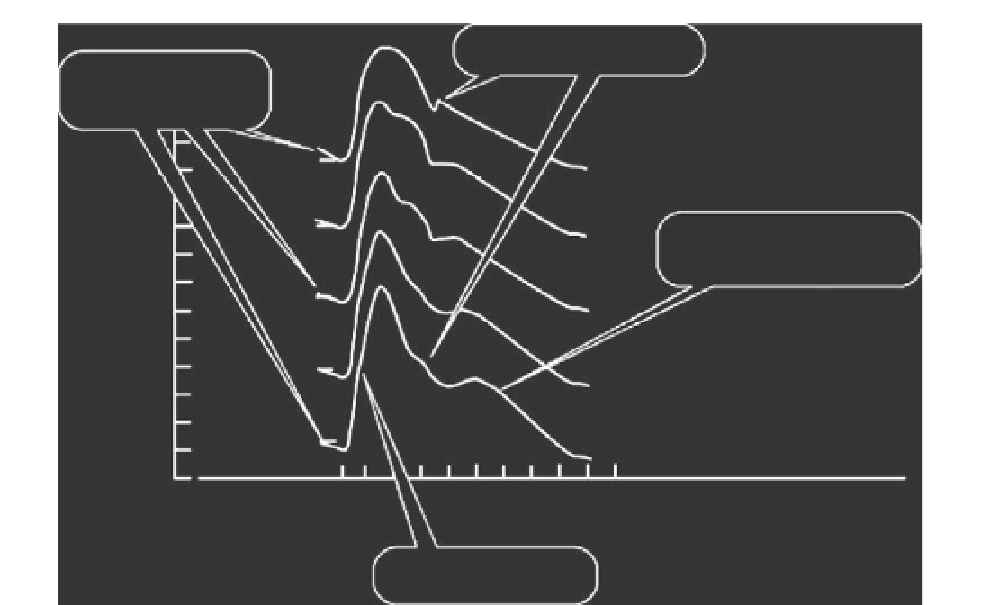Biomedical Engineering Reference
In-Depth Information
The dicrotic notch dampens
and eventually disappears
The diastolic and average
pressures fall a few mm Hg
due to resistance to flow
0
110
Subclavian artery
80
100
90
80
80
A diastolic wave appears due
to reflection of the pressure pulse
from the periphery
10 cm
70
60
50
40
30
20
10
0
80
20 cm
80
40 cm
80
60 cm: radial artery
0
0.4
0.6
0.8
1.0
0.2
Time (s)
The systolic pressure curve
steepens and is amplified
FIGURE 14.41
The blood pressure waveform and the resulting pulse pressure (difference between systolic and
diastolic) can vary in differing midlevel arteries. This would result in different measured systolic and diastolic
values of blood pressure via a sphygmomanometer.
circulatory system. However, even though blood pressure is normally taken in the arterial
network, the location of that measurement can affect the systolic and diastolic values.
As shown in Figure 14.41, the blood pressure waveform can be steeper with a corresponding
larger difference between systolic and diastolic pressure, depending on the location within
one of the midsized arteries. The increase in the pulse pressure (difference between systolic
and diastolic) is sometimes due to a reflection of the pressure wave, which is the propagation
of the pulse wave (moving far faster than the fluid time-varying pressure).
As can be seen, blood flow and velocity patterns can be quite complex and varying in
direction, time, and dimensions. Simplifying assumptions such as Poiseuille flow, a Newto-
nian fluid, and an incompressible fluid aid in our ability to develop first-order solutions to
rather complex waveforms and flow systems. Fluid mechanics is a more macroscopic
description of body functions, where mass transfer was a more cellular description of body
functions. Both mass transfer and fluid flow (momentum transfer) can affect heat transfer
within and outside the body. This is the topic of the next section.
14.3 BIOMEDICAL HEAT TRANSPORT
Heat transport within the human body provides the mechanism for the body's core tem-
perature to remain constant by shunting heat from the core to the periphery, where heat is
lost through the skin and through respiration. Heat is generated inside the body as it me-
tabolizes food, which produces heat as a by-product. Heat transfer from the body to the



